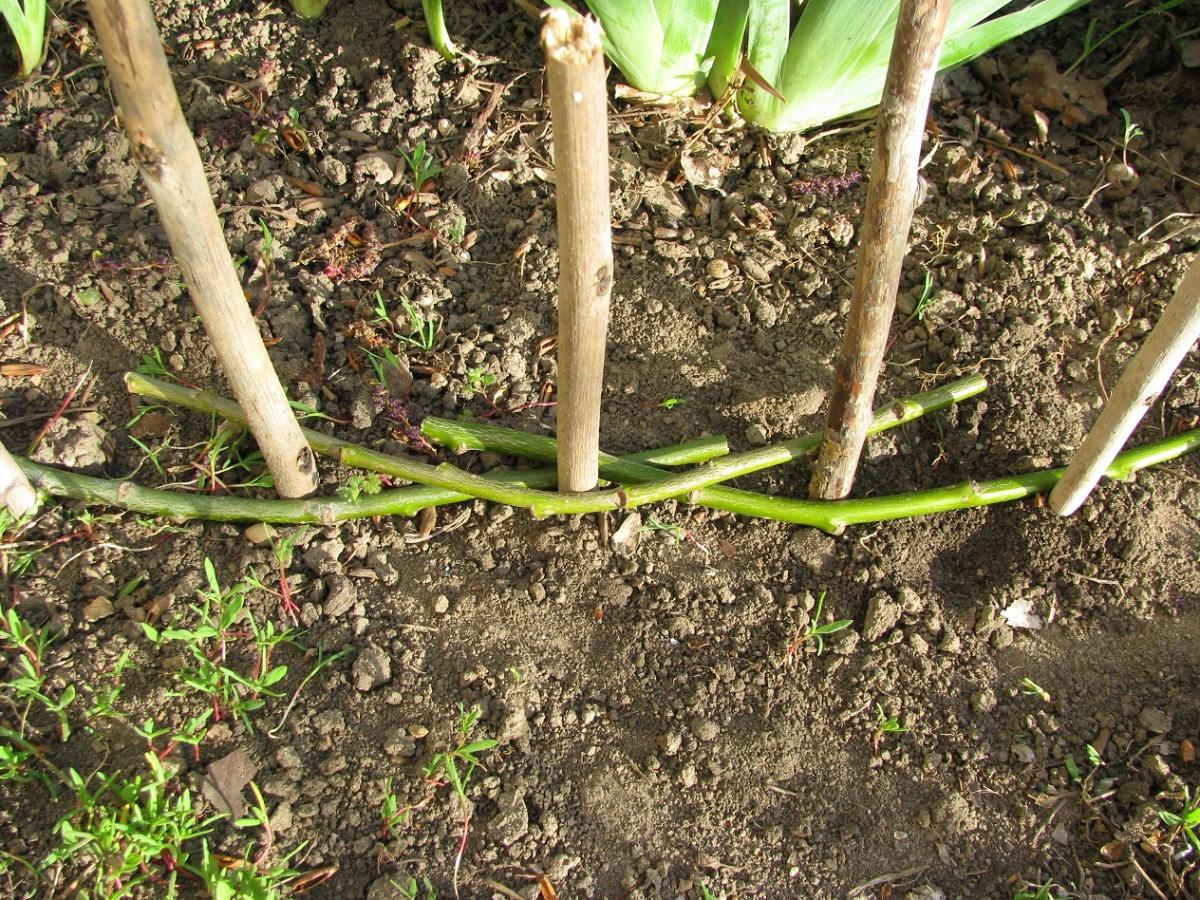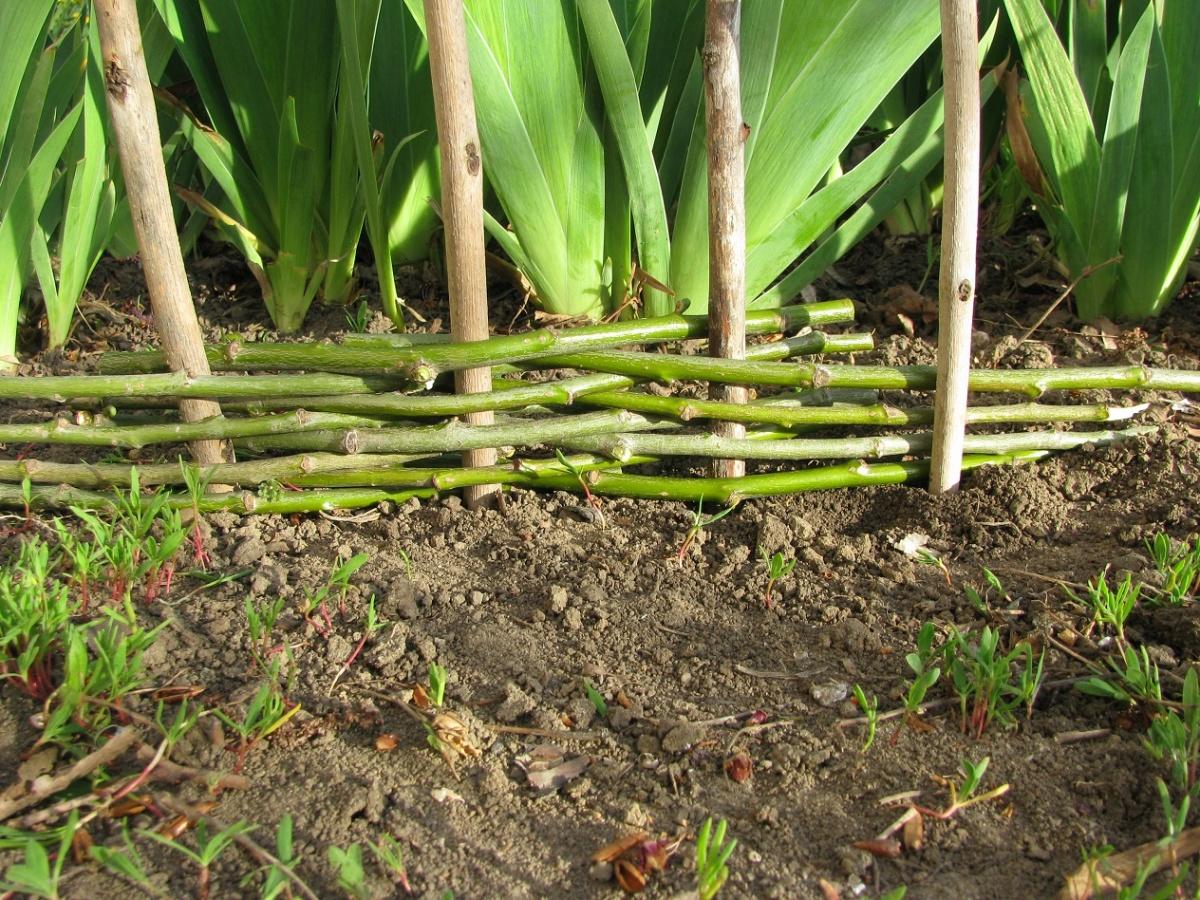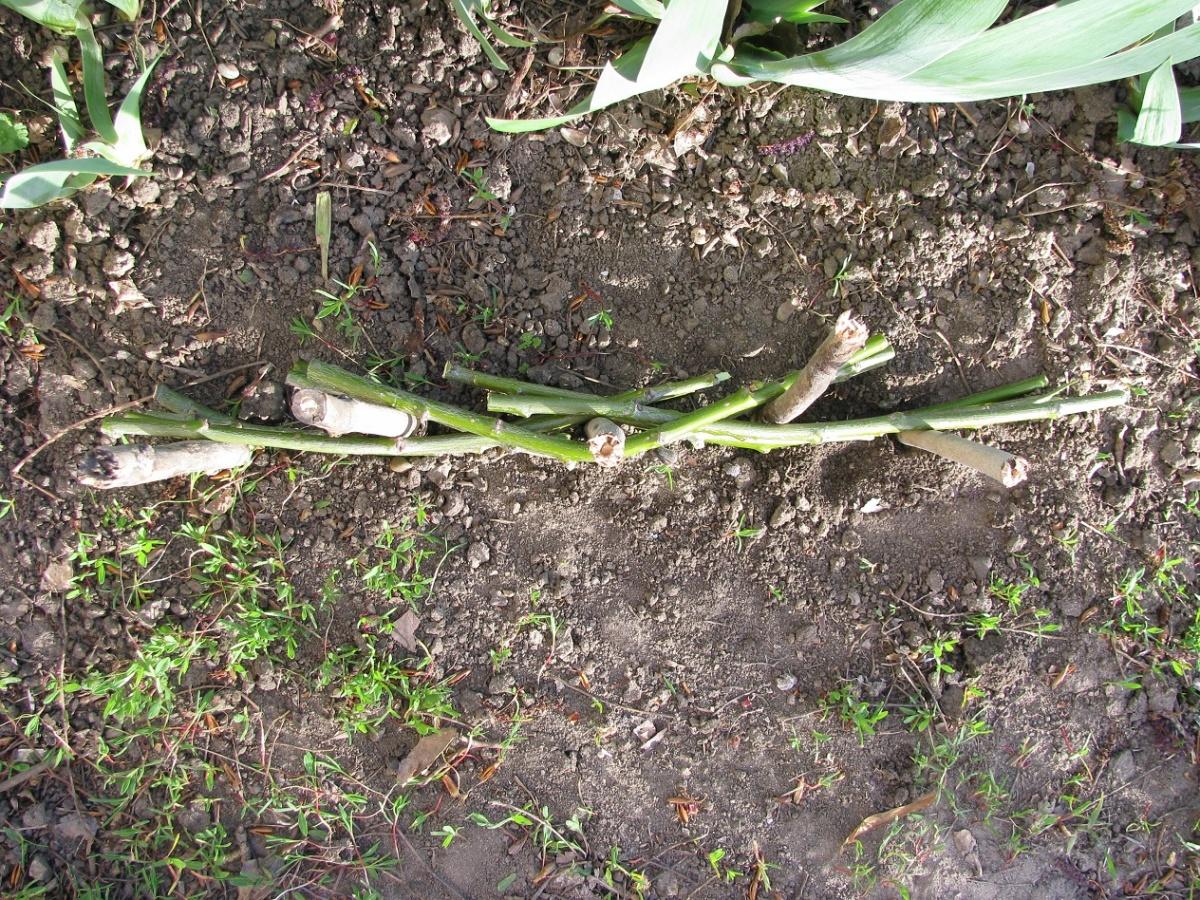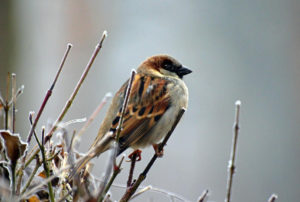
For those who like to decorate their flower beds with their own hands, I think a small master class on making the simplest fence will be useful. Of course, many people know about this process without me, but what if someone needs it?
The pegs that will serve as the base should be much thicker than the rods that bind them. Drive them deep enough into the ground so that they hold well during the process of weaving the fence. Start weaving in a staggered pattern. Measure the approximate length of the twig for weaving. Both edges should extend beyond the adjacent pegs by 2-3 cm (0.8-1.2 inch)(this is the inner side). If you make it shorter, it may dry out a little and fall out.

Cut them as much as possible, so as not to interrupt the creative process of weaving. That’s basically all. First we went through the whole fence next to the first one. The demo sample has only five pegs, so in the first row, we weave the second and fourth. In the second and third. And so on throughout your creation.

Here’s what happens at the end.


You see, if you look at my mini-barrier, you will understand that if the columns stand like monoliths, it will turn out beautifully! You can vary the pattern to put two twigs (one other) in each row. You can experiment with the pitch width between the support pegs or the thick wires that are entwined. When you set the desired height, cut off the tips of the branches that protrude from the extreme pegs evenly or score 1-2 pegs next to the peg support to cover the protruding ends.




Leave a Reply